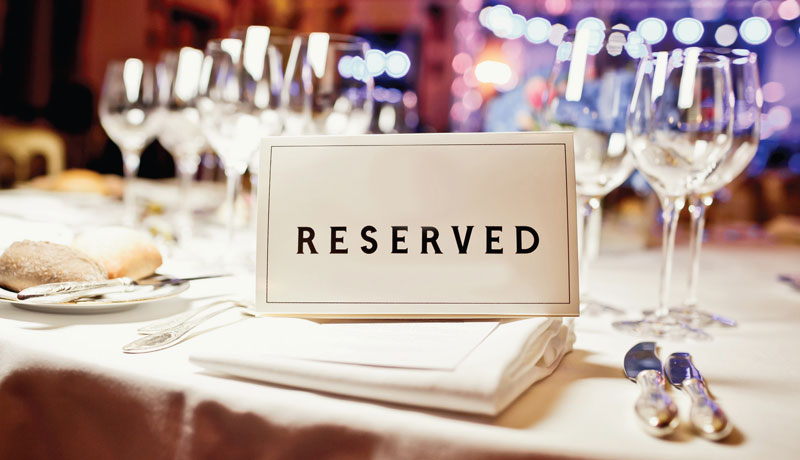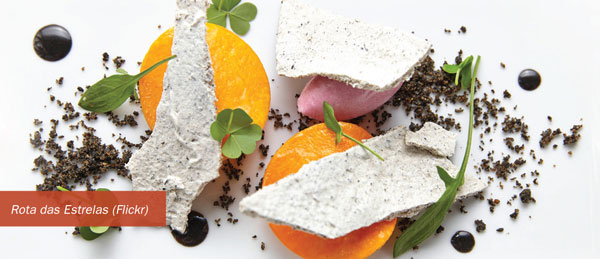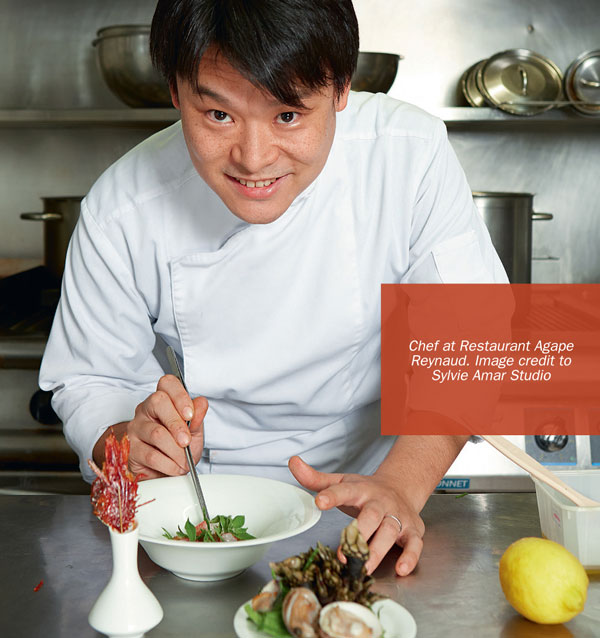
A common remark when it comes to the food in fine dining is “big plates, tiny portions!”. The reason is to create a stunning visual and a memory for diners, when the centrepiece is not crowded by too many aspects; according to Chef Jochen Kern, Director, School of Culinary Arts (Berjaya University College of Hospitality). While many tend to associate fine dining with Western food, Chef Jochen emphasised that it is not. It is about fine food, environment and service; regardless of cuisine as ingredients are stars and chefs’ creativity limitless.
Most days we might spend an hour for dinner and for many of us, it is actually quite an effort. What about a dinner that averages 2 1/2 – 3 hours where details are considered to the most minute; in terms of ingredients, flavours, plating, environment, service levels? We recently attended a 10-course degustation dinner in one of Kuala Lumpur’s fine dining restaurants and dare to claim it as “living to eat” instead of “eating to live”.

Many fine dining chefs describe it as “telling a story” or “going on a journey”. It star ts from the moment you walk into the restaurant where the ambience is subtle and toned down yet not to the point of dullness. In previous years, restaurants tend to opt for outstanding pieces of lighting to bring attention but modern day establishments prefer bold colour schemes and unconventional furniture ergonomic enough to mould to the diner’s comfort. Lighting is typically dim and warm to convey an intimate and cosy feel while selected music play softly in the background. Sounds should sync with the restaurant’s theme such as classical for a traditional fine dining ambience or jazz for contemporary cuisine.Such atmosphere automatically puts one in a relaxed mode and sets the tone for the night.
http://restaurants.about.com/od/restaurantconcepts/a/Fine_Dining.htm

CURATING AN EXCEPTIONAL DINING EXPERIENCE
One of the identifying factors in fine dining is the high levels of ser vice. It is not merely taking and delivering orders but the attention to detail; and to also make the guest feel
taken care of. It wasn’t everyday that I am escorted to my seat, chair held out for me and napkin laid on my lap. Servers must also be able to explain each menu items without notes, even the wine list if there isn’t a sommelier in the restaurant. The dining table should always be pristine thus servers are responsible to crumb the table in between courses and to replace linen napkins if a patron leaves the table. It is considered unacceptable if a server needs to ask the entire table who is having which dish. Each establishment ought to develop its own method of ordertaking and most are based on the 4 fundamental concepts of the duplicate, triplicate, service with order or pre-ordered as elaborated earlier in CONCEPT & DESIGN.
While on the subject of service; it is very much par t of hospitality. And hospitality is a culture, says Mr Yeoh Tay Boon, Head of School of Hospitality (Berjaya University College of Hospitality. Although the theory can be taught, the extra edge can be seen in an individual who has a heart of service and is projected through the ability to read a customer and efficiently meet their expectations. Through experience, someone in the hospitality industry should be able to anticipate what the customer wants. And in the area of dining, the chef, manager and ser vice staff must be able to work as one unit to create a memorable moment for the diner.

COVETING THE MICHELIN STAR
If there’s an Academy Awards for film; there’s also one for cooking. The Michelin Star is a standard restaurants aspire to work towards. A series of annual guide books published by the French company, Michelin (yes, of the famous tyres), the guide awards Michelin stars to select establishments. Originally a guide for French motorists in 1900 to boost demand for cars, thus for car tyres, it soon expanded to provide guides to restaurants and hotels. Anonymous reviewers would dine and rate their experience in order to decide if the restaurants deserved the coveted star. Back in 1926, it only regarded fine dining establishments with only a single star awarded and in 1936, it introduced the criteria for its 1, 2 and 3 stars:
1 – Star: A Very Good Restaurant In Its Category
2 – Stars: Excellent Cooking, Worth A Detour
3 – Stars: Exceptional Cuisine, Worth A Special Journey
The French chef Paul Bocuse, one of the pioneers of nouvelle cuisine said, “Michelin is the only guide that counts”. Having said that, most chefs we spoke to agreed that the star
must not be the sole reason to cook. While it improves the credibility of the profession, the chefs ultimately desire that their creations speak for itself and delight customers.
In designing a menu, it goes without saying that a chef’s philosophy and personality plays a big role. What does he/she want the diners to go home with? Food must engage senses and be a sensory experience as well. Drawing on my memory of the aforementioned degustation dinner, it is indeed a step by-step process. Visuals on the plate created a desire to really want to dive in and as the scent wafted up, I began to think of the possible components in the dish and as the tasting part commenced, it was then a play on your tastebuds. A chef’s understanding of the science of ingredients and how profiles work with one another is reflected through the progress of each course – each not over or under whelming the next for each item should stand on its own feet yet be able to play its role in the grand scheme of things.










